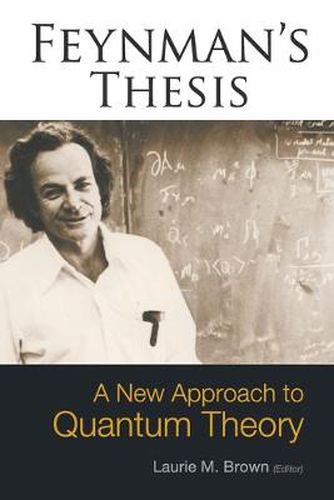Readings Newsletter
Become a Readings Member to make your shopping experience even easier.
Sign in or sign up for free!
You’re not far away from qualifying for FREE standard shipping within Australia
You’ve qualified for FREE standard shipping within Australia
The cart is loading…






This title is printed to order. This book may have been self-published. If so, we cannot guarantee the quality of the content. In the main most books will have gone through the editing process however some may not. We therefore suggest that you be aware of this before ordering this book. If in doubt check either the author or publisher’s details as we are unable to accept any returns unless they are faulty. Please contact us if you have any questions.
Richard Feynman’s never previously published doctoral thesis formed the heart of much of his brilliant and profound work in theoretical physics. Entitled The Principle of Least Action in Quantum Mechanics,‘ its original motive was to quantize the classical action-at-a-distance electrodynamics. Because that theory adopted an overall space-time viewpoint, the classical Hamiltonian approach used in the conventional formulations of quantum theory could not be used, so Feynman turned to the Lagrangian function and the principle of least action as his points of departure.The result was the path integral approach, which satisfied - and transcended - its original motivation, and has enjoyed great success in renormalized quantum field theory, including the derivation of the ubiquitous Feynman diagrams for elementary particles. Path integrals have many other applications, including atomic, molecular, and nuclear scattering, statistical mechanics, quantum liquids and solids, Brownian motion, and noise theory. It also sheds new light on fundamental issues like the interpretation of quantum theory because of its new overall space-time viewpoint.The present volume includes Feynman’s Princeton thesis, the related review article Space-Time Approach to Non-Relativistic Quantum Mechanics [Reviews of Modern Physics 20 (1948), 367-387], Paul Dirac’s seminal paper The Lagrangian in Quantum Mechanics’‘ [Physikalische Zeitschrift der Sowjetunion, Band 3, Heft 1 (1933)], and an introduction by Laurie M Brown.
$9.00 standard shipping within Australia
FREE standard shipping within Australia for orders over $100.00
Express & International shipping calculated at checkout
This title is printed to order. This book may have been self-published. If so, we cannot guarantee the quality of the content. In the main most books will have gone through the editing process however some may not. We therefore suggest that you be aware of this before ordering this book. If in doubt check either the author or publisher’s details as we are unable to accept any returns unless they are faulty. Please contact us if you have any questions.
Richard Feynman’s never previously published doctoral thesis formed the heart of much of his brilliant and profound work in theoretical physics. Entitled The Principle of Least Action in Quantum Mechanics,‘ its original motive was to quantize the classical action-at-a-distance electrodynamics. Because that theory adopted an overall space-time viewpoint, the classical Hamiltonian approach used in the conventional formulations of quantum theory could not be used, so Feynman turned to the Lagrangian function and the principle of least action as his points of departure.The result was the path integral approach, which satisfied - and transcended - its original motivation, and has enjoyed great success in renormalized quantum field theory, including the derivation of the ubiquitous Feynman diagrams for elementary particles. Path integrals have many other applications, including atomic, molecular, and nuclear scattering, statistical mechanics, quantum liquids and solids, Brownian motion, and noise theory. It also sheds new light on fundamental issues like the interpretation of quantum theory because of its new overall space-time viewpoint.The present volume includes Feynman’s Princeton thesis, the related review article Space-Time Approach to Non-Relativistic Quantum Mechanics [Reviews of Modern Physics 20 (1948), 367-387], Paul Dirac’s seminal paper The Lagrangian in Quantum Mechanics’‘ [Physikalische Zeitschrift der Sowjetunion, Band 3, Heft 1 (1933)], and an introduction by Laurie M Brown.